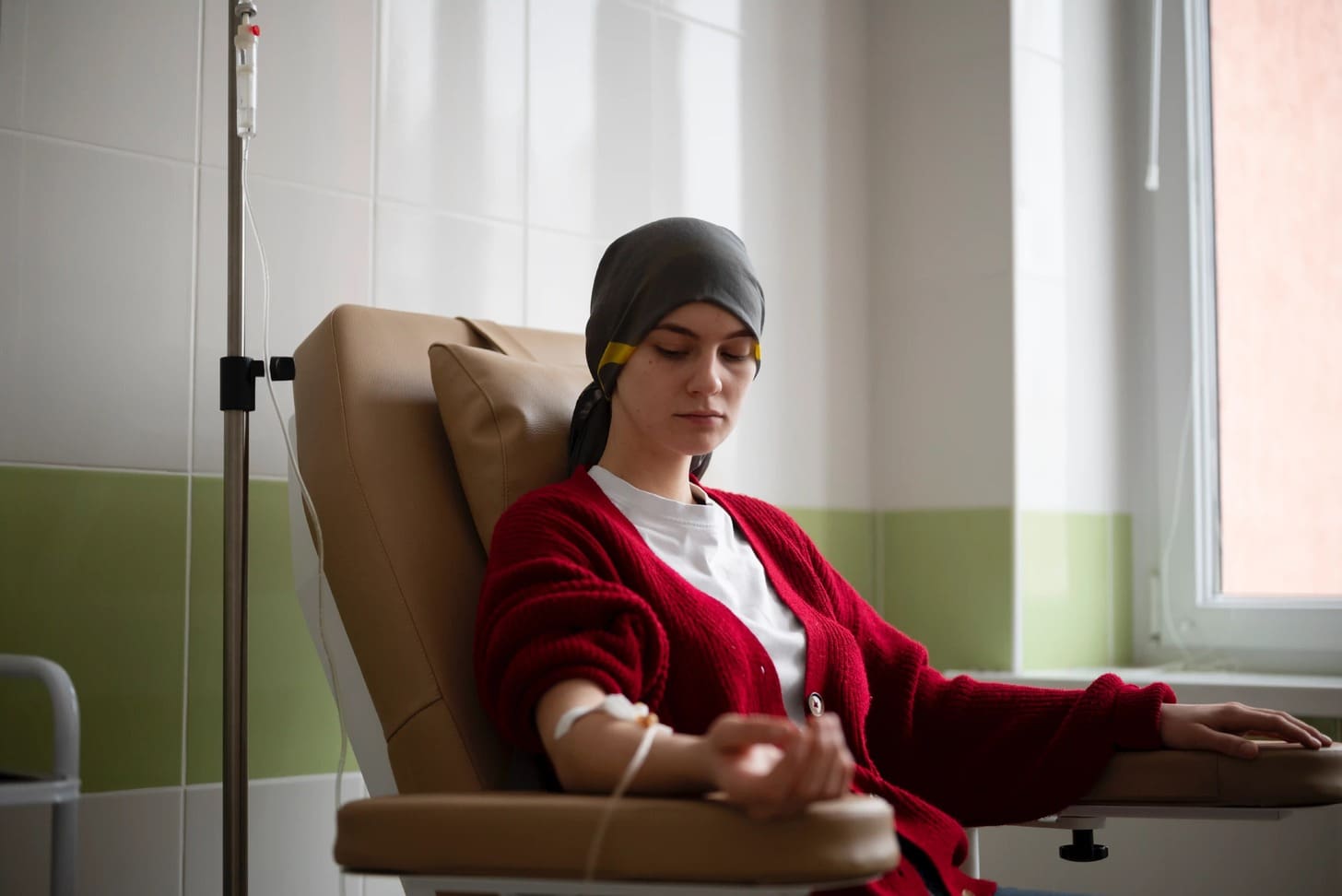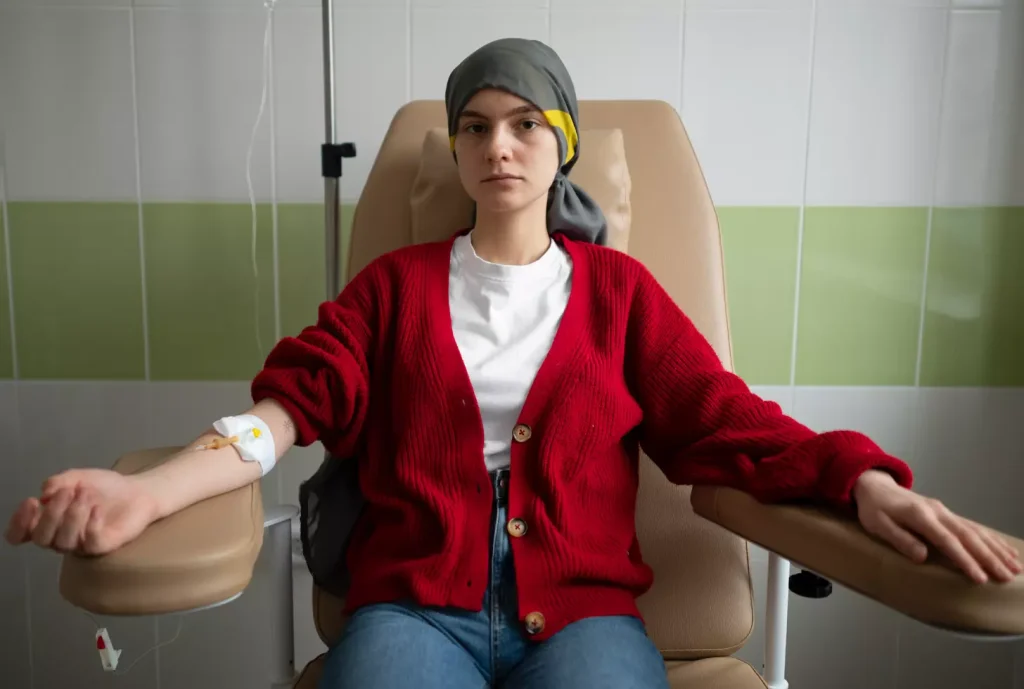
At Liv Hospital, we know how worrying it is to feel tired or weak all the time. These feelings are often linked to low iron levels and anemia. Studies show that up to 90% of cancer patients might have anemia, based on their cancer type and treatment.
This condition, where there’s not enough red blood cells or hemoglobin, really affects a person’s life quality.
We will look into how anemia and cancer are connected. We’ll also talk about when low iron levels could mean there’s something wrong. Knowing about this link is key for catching problems early and treating them well.

Anemia is a health issue where you have too few red blood cells or hemoglobin. It’s not just about cancer. Knowing about anemia is key for both patients and doctors.
Anemia means you have fewer red blood cells or less hemoglobin than normal. Hemoglobin carries oxygen to your body. Without enough, you might feel tired, weak, and have other symptoms. Doctors use a Complete Blood Count (CBC) test to find anemia.
While cancer can cause anemia, it’s not the only reason. Other things can lead to anemia too. These include:
For example, iron-deficiency anemia might show early signs of colon problems. Finding the cause of anemia is important for treatment. Sometimes, anemia can mean there’s a bigger issue, like leukemia, a blood and bone marrow cancer.

It’s key to understand how common anemia is in cancer patients. Anemia is when you don’t have enough red blood cells or hemoglobin. It’s a big problem for many cancer patients.
We’ll look at how often anemia happens in different cancers. The link between anemia and cancer is complex. It depends on the cancer type, treatment, and the patient’s health.
Research shows that up to 90% of cancer patients get anemia. This number changes based on the cancer and treatment. It shows why checking for anemia is so important in cancer care.
Anemia can really hurt a cancer patient’s life quality and treatment success. So, it’s vital to tackle anemia in cancer treatment.
Anemia rates differ a lot between cancer types. For example, people with leukemia or lymphoma often get anemia more than those with solid tumors.
| Cancer Type | Prevalence of Anemia |
|---|---|
| Leukemia | 70-90% |
| Lymphoma | 50-80% |
| Solid Tumors (e.g., Breast, Lung) | 30-60% |
The table shows how anemia rates change with different cancers. It points out the need for specific ways to handle anemia in cancer patients.
Cancer can cause anemia in several ways. It’s important to understand these ways to see how cancer and anemia are connected. We’ll look at how cancer affects the body, like when it invades bone marrow and messes with red blood cell making.
In leukemia and lymphoma, cancer cells get into the bone marrow. The bone marrow is inside bones like hips and thighbones. It makes blood cells. When cancer cells take over, they push out the cells that make red blood cells, causing anemia.
Leukemia is a blood and bone marrow cancer. It makes too many bad white blood cells. These cells fill up the bone marrow, making it hard to make red blood cells.
Cancer can also mess with red blood cell making. Even if it doesn’t get into the bone marrow, cancer can cause inflammation. This leads to cytokines, proteins that slow down red blood cell making.
| Mechanism | Description | Examples of Cancer Types |
|---|---|---|
| Bone Marrow Invasion | Cancer cells invade the bone marrow, crowding out normal red blood cell production. | Leukemia, Lymphoma |
| Disruption of Red Blood Cell Production | Cancer leads to inflammation and release of cytokines that suppress red blood cell production. | Various cancers, including solid tumors |
Cancer-related anemia has many causes. It’s not just the cancer itself that affects red blood cell production. There are other ways anemia gets worse.
Chronic bleeding from tumors is a big problem. Tumors in the gut can cause long-term blood loss. This loss of blood leads to iron-deficiency anemia.
For example, colorectal cancer often causes bleeding. This bleeding can lead to iron loss over time. It’s important to keep an eye on blood and iron levels in these patients.
Inflammation from cancer affects iron levels. Inflammatory cytokines increase hepcidin, a protein that controls iron. This means less iron is available for making red blood cells, even if there’s enough iron stored.
This shows we need to treat anemia in cancer patients in a detailed way. We should check and manage inflammation too.
| Mechanism | Effect on Iron Metabolism | Impact on Anemia |
|---|---|---|
| Cancer-related Inflammation | Increased Hepcidin Production | Reduced Iron Availability for Erythropoiesis |
| Chronic Bleeding | Direct Loss of Iron | Iron-Deficiency Anemia |
| Nutritional Deficiencies | Inadequate Iron Intake or Absorption | Exacerbation of Iron-Deficiency Anemia |
Advanced cancer can cause nutritional problems. These include less appetite, changed metabolism, and physical effects from the tumor. This can lead to not getting enough iron, vitamins, and other nutrients needed for red blood cells.
It’s key to fix these nutritional issues to manage anemia. This might mean diet advice, supplements, or other support to get the right nutrients.
Understanding and tackling these indirect causes helps doctors create better treatment plans. This can improve how patients do.
Exploring the link between cancer and anemia is key. We must see how cancer treatments cause anemia. These treatments aim to kill cancer cells but can harm healthy cells too.
Chemotherapy fights cancer by targeting fast-growing cells. Sadly, it also hits healthy cells. This affects the bone marrow, where blood cells are made.
Chemotherapy can lower red blood cell production. This leads to anemia, causing fatigue and weakness.
Effects of Chemotherapy on Anemia:
Radiation therapy is another key cancer treatment. It can harm the bone marrow, depending on where it’s applied. Areas like the pelvis or spine are at risk.
| Treatment Type | Impact on Anemia |
|---|---|
| Chemotherapy | Suppresses bone marrow, reducing red blood cell production |
| Radiation Therapy | Damages bone marrow when applied to certain areas, affecting blood cell production |
| Surgical Interventions | Can lead to acute blood loss, contributing to anemia |
Surgery is a common cancer treatment. It can cause a lot of blood loss. This loss can quickly drop red blood cell levels, causing anemia.
Knowing how treatments cause anemia helps manage it in cancer patients. Healthcare providers can then find ways to lessen these effects and help patients better.
Iron deficiency often means anemia, but it’s different with cancer. It can be an early sign of cancer. Knowing how low iron levels relate to cancer helps spot warning signs early.
Cancer can cause iron loss in different ways, depending on the type. For example, cancers in the gut can lead to chronic bleeding. This bleeding takes iron from the body over time.
Other cancers might not bleed but can cause iron loss through inflammation and changes in how the body uses iron. This makes it hard to get enough iron for making blood cells.
Cancer-related inflammation can also mess with iron use in the body. This can lead to anemia of chronic disease. It’s a condition where the body can’t use iron even if it has enough.
Telling if iron loss is due to cancer or something else is key. Nutritional issues are common, but if iron loss doesn’t get better, it might be cancer. This is true, even more so for cancers in the gut.
To figure out why someone has iron deficiency anemia, doctors do tests and sometimes more invasive procedures. Initial assessments include blood tests and tests for iron. They also do tests to see if there’s bleeding in the gut.
In short, low iron can mean cancer, like in cases of iron deficiency anemia that doesn’t go away. It’s important to understand how cancer affects iron levels and how to tell if it’s cancer or something else. This helps find cancer early in people who need it.
It’s important to know the signs of anemia that could mean cancer. Anemia is when you don’t have enough red blood cells or hemoglobin. It can be a sign of many health problems, including cancer. We need to know when anemia might mean we need to check for cancer.
Anemia that lasts a long time, doesn’t have a clear cause, or is very bad is a worry. Chronic anemia that doesn’t get better with usual treatments might mean cancer. For example, anemia from colon cancer can happen because of ongoing bleeding. We should look at how long it lasts, how bad it is, and if treatments work.
| Characteristics of Anemia | Potential Cancer Association |
|---|---|
| Persistent anemia despite treatment | Gastrointestinal cancers (e.g., colon cancer) |
| Severe anemia at diagnosis | Bone marrow cancers (e.g., leukemia) |
| Unexplained iron deficiency anemia | Gastrointestinal or gynecological cancers |
Some symptoms with anemia can make us think of cancer. These include unintentional weight loss, gastrointestinal bleeding, or persistent fatigue. For instance, anemia and a lot of weight loss might mean we need to check for cancer. Studies show that real-world evidence is helping make treatment in many areas, showing the need for careful checks.
It’s key to spot these warning signs early. If you or someone you know has anemia that won’t go away, or is very bad, and has other symptoms, see a doctor right away.
The journey to diagnose anemia that might point to cancer starts with key tests. Finding out why someone has anemia is vital. It could mean there’s a cancer hiding in the body.
Diagnosing anemia begins with a Complete Blood Count (CBC) and iron studies. A CBC checks the blood’s red cells, hemoglobin, and more. Iron studies look for iron deficiency, a common anemia cause.
Key components of initial blood work include:
If tests hint at a link between anemia and cancer, more tests follow. These might include:
These tests help find the cause of anemia and guide treatment.
Diagnosing anemia linked to cancer is a team effort. It starts with primary care doctors who do initial tests. If cancer is thought of, they send patients to specialists.
The journey typically involves:
Throughout, patients get full care, from diagnosis to treatment and aftercare. Knowing the diagnostic steps helps patients understand their care better.
Managing cancer-related anemia needs a mix of treatments. We must tackle the cancer and the anemia itself. This approach is key to better patient outcomes and quality of life.
Treating the cancer is the first step in managing anemia. This can include surgery, chemotherapy, or radiation therapy. By focusing on the cancer, we can lessen anemia and its symptoms.
Key considerations include:
Blood transfusions and iron supplements are common treatments for anemia in cancer patients. Blood transfusions quickly raise red blood cell counts, easing anemia symptoms. Iron supplementation treats iron deficiency anemia and can be given orally or intravenously.
When using these treatments, we must consider:
Erythropoiesis-stimulating agents (ESAs) are another option for treating anemia. ESAs boost red blood cell production in the bone marrow. They are helpful for patients on chemotherapy.
Important aspects to consider when using ESAs include:
By understanding and applying these treatment strategies, we can manage cancer-related anemia well. This improves patient outcomes and quality of life.
Some groups face a higher risk of anemia. Knowing these risks is key for early detection. Anemia can be serious, hitting hard on those with health issues or going through cancer treatment.
Age and gender affect anemia risk. Women, mainly those of childbearing age, often face iron deficiency anemia due to menstrual blood loss. Older adults are also at risk due to less food intake, chronic diseases, and changes in the gut that affect nutrient absorption.
The World Health Organization says older adults are very vulnerable to anemia. Rates go up a lot after 65.
A family history of cancer, like colon cancer, raises anemia risk. Genetic factors can also play a part, affecting red blood cell production or function in inherited disorders.
“A family history of cancer can be a significant risk factor for developing anemia, specially in cases of gastrointestinal malignancies.”
An Oncologist
At-risk individuals need regular checks. This includes blood tests for anemia and iron deficiency. Healthcare providers should watch for signs of conditions that could lead to anemia, like bleeding or malabsorption.
Early detection and management of anemia can significantly improve outcomes for at-risk individuals. Understanding risks and monitoring closely helps healthcare providers give the best care to those who need it most.
We’ve looked into how anemia and cancer are connected. Anemia is a big problem for cancer patients, caused by the disease or its treatment. Low iron levels can also be a sign of cancer, making it important to watch for.
At Liv Hospital, we aim to give top-notch healthcare and support to international patients. Our goal is to offer the best care and follow the latest medical standards. It’s key to catch anemia early in cancer patients to manage it well.
By tackling anemia and its causes, doctors can help patients live better lives. We work hard to handle anemia in cancer care. This means giving patients the best treatment for their condition, whether it’s for anemia, cancer, or both.
Low red blood cells, or anemia, can mean different things. It’s not just about cancer. We look at your overall health and symptoms to find the cause.
Yes, anemia might point to cancer if it doesn’t go away or is very bad. Some cancers, like leukemia, can mess with red blood cell making.
Yes, cancer can lead to anemia in several ways. Cancer cells can invade bone marrow, cause bleeding, or affect iron levels.
Cancer anemia happens when you have cancer. It can come from the cancer itself or from treatments like chemo and radiation.
Low iron might mean cancer, but it’s not always the case. It can also happen from other reasons like bleeding from non-cancerous sources.
Yes, low iron can hint at cancer, mainly if it’s from bleeding tumors. It’s key to find out why iron levels are low.
A low blood count, like anemia, might be linked to cancer, like leukemia. But, it can also be from other health problems.
Yes, anemia is common in cancer patients. It can be from the cancer itself or from treatments.
Yes, cancer can lead to iron deficiency, mainly from bleeding. Inflammation from cancer can also mess with iron levels.
Anemia might be a cancer sign, mainly if it’s ongoing, unexplained, or severe. We need to look at your health and symptoms.
Anemia isn’t cancer itself, but it can be a sign or problem from cancer. Knowing why you have anemia is important.
Yes, anemia can be a leukemia sign. This cancer affects bone marrow, making it hard to make red blood cells.
Signs that anemia might mean cancer include ongoing, unexplained, or severe anemia. Look out for weight loss, bleeding, or other symptoms too.
Subscribe to our e-newsletter to stay informed about the latest innovations in the world of health and exclusive offers!
WhatsApp us